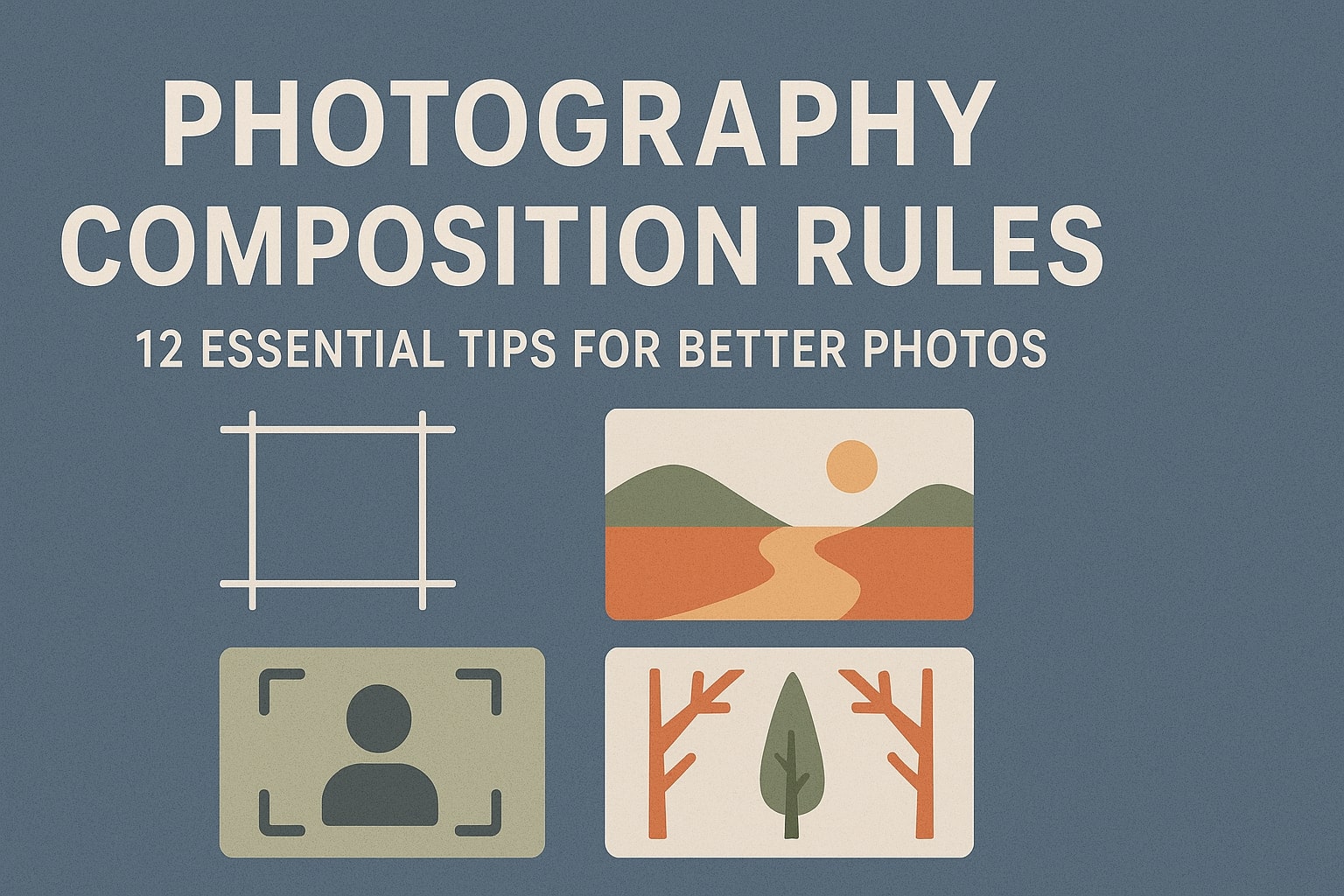What Are the Most Important Photography Composition Rules?
The most essential photography composition rules form the foundation of visual storytelling. The rule of thirds divides your frame into nine equal sections, placing important elements along these lines or at their intersections. Leading lines guide the viewer's eye through the image, while framing uses elements in the foreground to create a natural border around your subject.
Symmetry and patterns create visual harmony, while negative space gives your subject room to breathe. Fill the frame technique eliminates distractions by getting close to your subject. These fundamental rules work because they align with how our eyes naturally process visual information, making your photos more engaging and memorable.
📺 Featured Video

Learn 20 Photo Composition Techniques in JUST 20 Minutes!
by Sean Gallagher - Pro Photographer
- Rule of Thirds - Divide your frame into nine equal sections and place important elements along these lines or at their intersections for more dynamic compositions.💡 Personal tip: This is my absolute favorite! I used to center everything until I learned this rule. Now my photos look 10x more professional. Try placing your subject's eyes on the upper intersection points for portraits.
- Leading Lines - Use natural or architectural lines to guide the viewer's eye through your photograph toward the main subject.
- Framing - Create a frame within your frame using elements like archways, branches, or windows to draw attention to your subject.
- Symmetry and Patterns - Look for symmetrical scenes or repeating patterns, then either emphasize them or break them for visual interest.
- Depth and Layers - Include foreground, middle ground, and background elements to create a three-dimensional feel in your two-dimensional image.
- Fill the Frame - Get close to your subject to eliminate distractions and create more intimate, impactful images.🎯 Works every time: I love this technique for macro photography! When shooting flowers or small objects, getting close eliminates distracting backgrounds and creates that beautiful bokeh effect.
- Negative Space - Use empty space around your subject to create breathing room and emphasize the main focal point.
- Golden Ratio - Similar to the rule of thirds but based on the Fibonacci sequence, creating a more natural-feeling composition.
- Diagonals and Triangles - Incorporate diagonal lines and triangular shapes to add dynamism and stability to your compositions.⚡ Game changer: Leading lines transformed my landscape photography. I now actively hunt for rivers, fences, or trails that draw the eye toward my main subject.
- Color Theory - Use complementary, analogous, or monochromatic color schemes to create mood and visual harmony.
- Balance - Distribute visual weight evenly across your frame, whether through symmetrical or asymmetrical balance.
- Simplification - Remove unnecessary elements to create clean, powerful compositions that clearly communicate your message.
How Do You Apply Composition Rules in Different Photography Styles?
Photography composition rules adapt differently across various styles and genres. In portrait photography, the rule of thirds places eyes along the upper third line, while negative space emphasizes the subject's emotion. Landscape photography often uses foreground, middle ground, and background layers to create depth, combined with leading lines from rivers or paths.
Street photography benefits from decisive moment composition, where elements align perfectly within the frame. Macro photography relies heavily on fill-the-frame technique and shallow depth of field to isolate subjects. Understanding how to modify these rules for different scenarios makes you a more versatile photographer who can adapt to any situation.
When Should You Break Photography Composition Rules?
Learning when to break photography composition rules is just as important as following them. Centered composition can create powerful, symmetrical images that demand attention. Tilted horizons add dynamic energy to otherwise static scenes. Cutting off parts of subjects can create mystery and draw viewers deeper into the image.
Breaking rules works best when done intentionally for specific artistic effects. Before breaking a rule, understand why it exists and what effect you're trying to achieve. The most compelling photographs often combine traditional composition with creative rule-breaking, creating images that feel both familiar and surprisingly fresh.
📺 Featured Video

The 15 Elements of Photography Composition
by Peter Evans
